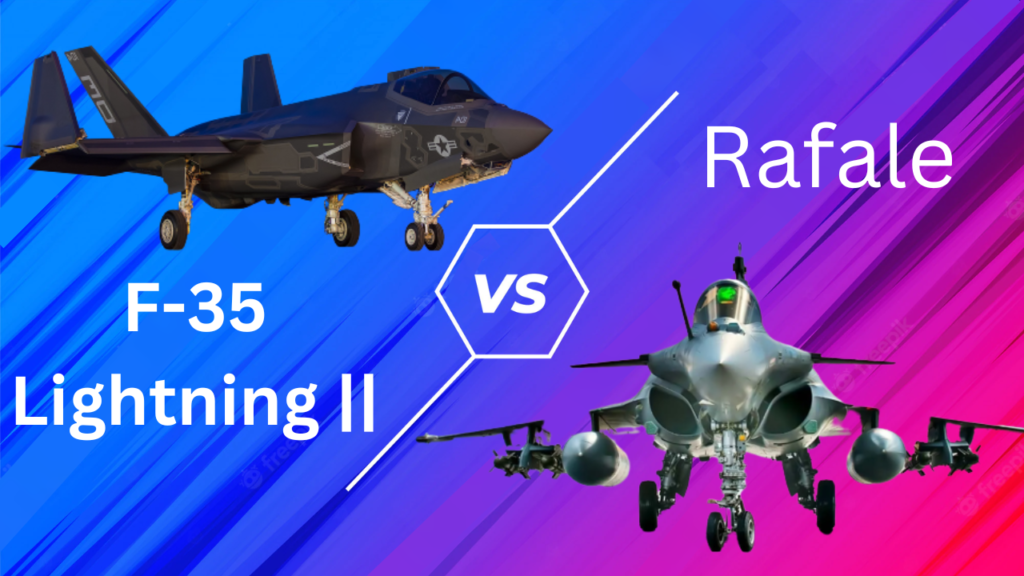
There were a lot of announcements about the selection and procurement of combat aircraft in 2022. This year’s headlines were dominated by two aircraft: the French Rafale and the American F-35. The political ramifications of the technical-military selection criteria are up for discussion.
Modern combat aircraft evaluation, like that of other complex platforms like air defense systems, calls for a holistic strategy that takes into account military, technological, and political factors. As an example of this sort of contest, consider the rivalry between the Rafale and the F-35.
Reportedly, Germany would rather purchase the F-35 stealth fighter jet from the fifth generation to replace its old Tornado instead of the Rafale. This switch in decision sparked curiosity in people’s heads and made them ask –
Is F-35 better than Rafale?
Why did they go for the F-35 instead of the Rafale?
The F-35 Lightning II
The F-35 Lightning II is an American single-seat, single-engine, all-weather stealth multirole combat aircraft developed by Lockheed Martin for use in air superiority and strike missions. Further, it can engage in electronic warfare and carry out Intelligence, Surveillance, and Reconnaissance operations.
Initially flying in 2006, the first production F-35s were delivered to the United States Marine Corps in July 2015, the United States Air Force in August 2016, and the United States Navy in February 2019. In 2018, Israeli military pilots were the first to use the plane in combat.
The United States works with seven other countries—the United Kingdom, Australia, Canada, Italy, Norway, Denmark, and the Netherlands—on the design and production of the F-35. The United States decided to cut ties with Turkey in 2020 after Ankara bought S-400 air defense systems from Russia, which led to the country’s removal as a program partner.
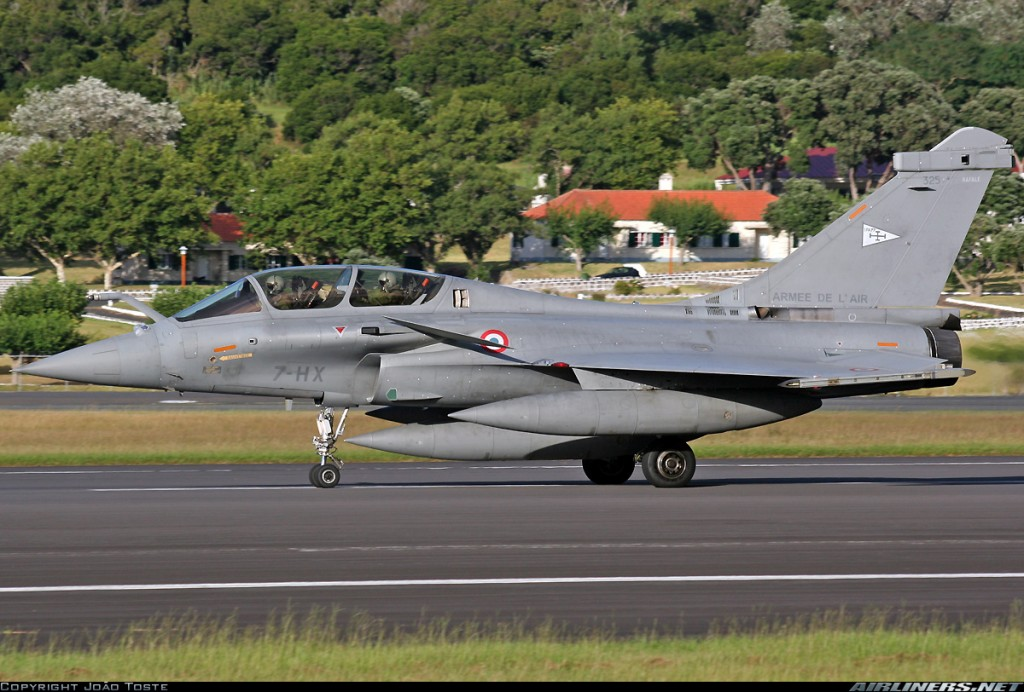
Cockpit and Avionics Systems
L-3 Display Systems, now a division of L3Harris, created the panoramic cockpit display system, which consists of two 0.25m x 0.22m active-matrix liquid crystal displays and a display management computer.
The following will contribute to the avionics systems of the F-35:
- Controls for the side stick and throttle on BAE Systems avionics
- Advanced helmet-mounted display from Vision Systems International
- Alternative helmet-mounted display from BAE Systems Platform Solutions based on the binocular helmet being developed for the Eurofighter Typhoon
- Ball Aerospace’s integrated body antenna suite for communications, navigation, and integration (CNI).
- Advanced avionics systems, infrastructure, image processing, digital map software, fiber optics, high-speed communications links, and a component of the Communications, Navigation, and Information (CNI) system are all provided by Harris Corporation (now L3Harris).
- Inertial navigation/global positioning system (INS/GPS), air data transducers, and radar altimeter all come from Honeywell.
- 24-channel GPS with a digital anti-jam receiver from Raytheon (DAR).
Weapons
There are two parallel compartments for carrying weaponry before the landing gear. Each weapons bay has two hardpoints installed to support various missiles and explosives.
The JDAM (joint direct attack munition), the CBU-105 WCMD (wind-corrected munitions dispenser) for the sensor-fused weapon, the JSOW (joint stand-off weapon), the Paveway IV guided bombs, the small diameter bomb (SDB), the AIM-120C AMRAAM air-to-air missile, and the Brimstone anti-armor missile must all be cleared for internal carriage.
JASSM (joint air-to-surface stand-off missile), AIM-132 ASRAAM, AIM-9X Sidewinder, and Storm Shadow cruise missiles are all suitable for external transport.

Variants of F-35
In July 2006, the single-seat fighter was officially named the F-35 Lightning II. There are three different types of the F-35: the conventional take-off and landing (CTOL) F-35A, the short take-off and vertical landing (STOVL) F-35B, and the carrier-based F-35C. (CV).
Dassault Rafale
The Rafale is a twin-jet combat aircraft made by Dassault Aviation that can perform both short- and long-range missions. It can be employed for reconnaissance, high-precision strikes, ground and maritime attacks, and nuclear strike deterrents. The French Navy and French Air Force were the intended users of the aircraft.
Combat actions with fighter aircraft took place in a number of countries, including Afghanistan, Mali, Libya, Syria, and Iraq. The planes were also ordered by Egypt, Qatar, and India.
In March 2019, the Langkawi International Maritime and Aerospace (LIMA) Exhibition featured Rafale combat aircraft.
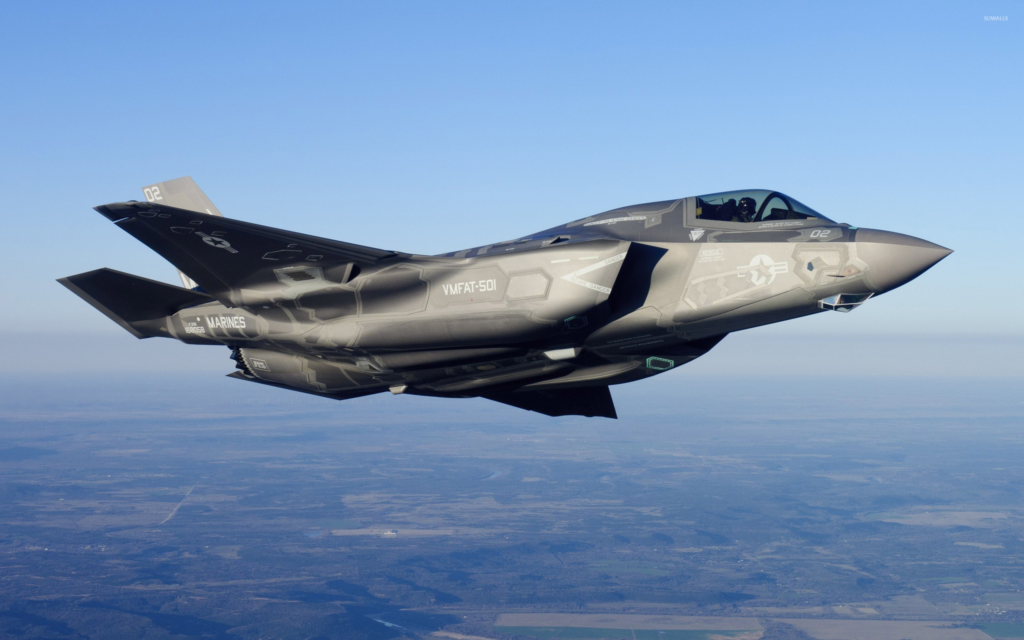
The cockpit of Dassault’s Rafale
The throttle and stick are operated manually in the cockpit (HOTAS). Thales Avionique has installed a heads-up, wide-angle holographic display in the cockpit that shows flight information, mission information, and fire cues.
The tactical situation and sensor data are presented on a collimated, multi-image head-level display, and the aircraft system characteristics and mission information are displayed on two touchscreen lateral displays.
The pilot also has a sight and display installed on his helmet. Throughout the mission, an onboard recorder and CCD camera capture the image from the head-up display.
Rafale fighter weapons
With 14 hardpoints for the airforce version and 13 for the navy variant, Rafale can transport payloads weighing more than 9 tons. The arsenal of armaments consists of air-to-air missiles Mica, Magic, Sidewinder, ASRAAM, and AMRAAM; air-to-ground missiles Apache, AS30L, ALARM, HARM, Maverick, and PGM100; and anti-ship missiles Exocet/AM39, Penguin 3, and Harpoon.
The MBDA (previously Aerospatiale) ASMP stand-off nuclear missile can be delivered by a Rafale aircraft for a strategic mission. The MBDA Storm Shadow / Scalp EG stand-off cruise missile was certified for use on the Rafale in December 2004.
The MBDA Meteor BVRAAM beyond visual range air-to-air missile had its debut flight on a Rafale fighter in September 2005. Successful flight tests of the Exocet, Scalp-EG, Mica, ASMP-A (to replace the ASMP), and Meteor missiles were conducted from the Charles de Gaulle in December 2005.
The Sagem AASM precision-guided bomb, which incorporates GPS/inertial guidance and, optionally, imaging infrared terminal guidance, was fired for the first time by the Rafale in April 2007. Since 2008, Rafale aircraft have been fitted with AASMs. Six AASM missiles, each with a 10m accuracy goal, can be carried by the Rafale.
The Nexter (previously Giat) 30mm DEFA 791B cannon on the Rafale can fire 2,500 rounds per minute and has a dual gun pod. For laser missile guidance, the Rafale is outfitted with laser designation pods.
Countermeasure and sensor technology

The Thales Spectra electronic warfare system is used by Rafale. Solid state transmitter technology, a DAL laser warning receiver, missile warning, detecting systems, and jammers are all included in Spectra.
The Thales-developed RBE2 passive electronically scanned radar, with look-down and shoot-down capabilities, is a feature of the Rafale multirole combat fighter. The radar can identify and prioritize threats while tracking up to eight targets at once.
The Rafale was outfitted with an active electronically scanned RBE2 version created by Thales in February 2011. In 2008, the Rafale’s radar underwent flight testing.
The aircraft’s nose is equipped with an infrared search and track system made by Thales and SAGEM. The optronic suite does target identification, telemetry, target tracking, and target discrimination automatically.
Thales will maintain the electronic systems and warfare of the aircraft under a ten-year contract given by the French Ministry of Defense in January 2012.
Variants of Rafale
Rafale has lots of variants like –
Rafale A, Rafale D, Rafale B variant F3-R, Rafale C variant F3-R, Rafale M variant F3-R, Rafale N, and Rafale R. It also has various national variants, which means many countries have their own version of Rafale.
For example –
- Rafale DM – Two-seater version for the Egyptian Air Force.
- Rafale EM – Single-seat version for the Egyptian Air Force.
- Rafale DH – Two-seater version for the Indian Air Force.
- Rafale EH – Single-seat version for the Indian Air Force.
- Rafale DQ – Two-seater version for the Qatar Emiri Air Force.
- Rafale EQ – Single-seat version for the Qatar Emiri Air Force.
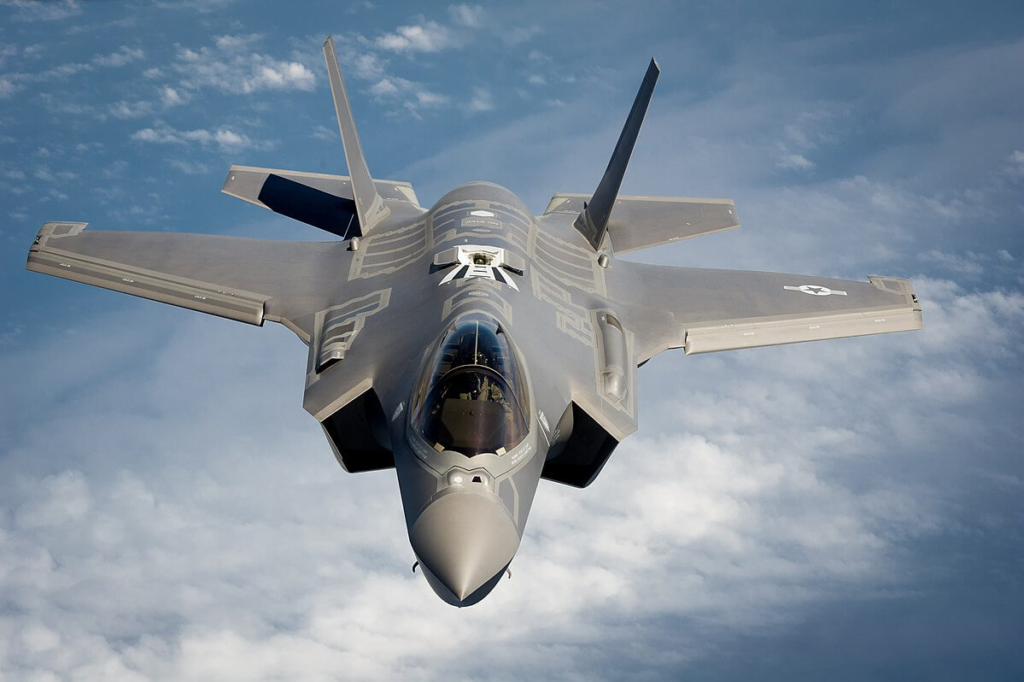
F-35 vs Rafale
Specifications
Basics
| Data | F-35 | Rafale |
| Origin: | United States | France |
| Year: | 2016 | 2001 |
| Crew: | 1 | 1 |
| Production: | 785 units | 201 units |
Dimensions and Size
| Dimensions | F-35 | Rafale |
| Length: | 15.4 m (50.5 ft) | 15.3 m (50.2 ft) |
| Wingspan: | 10.6 m (35 ft) | 10.9 m (35.8 ft) |
| Wing area: | 43 m2 (460 sq ft) | 45.7 m2 (492 sq ft) |
| Height: | 5.2 m (17.2 ft) | 5.3 m (17.5 ft) |
| Weight: | 13,290 kg (29,300 lb) | 10,300 kg (22,708 lb) |
| Power: | 1 x 125 kN (28,000 lbf) | 2 x 75kN (11,250 lbf) |
Performance
| Specs | F-35 | Rafale |
| Max speed: | 1,930 kph (1,199 mph) | 2,225 kph (1,383 mph) |
| Range: | 2,220 km (1,379 mi) | 3,700 km (2,299 mi) |
| Ceiling: | 15,240 m (50,000 ft) | 15,835 m (51,952 ft) |
| g limits: | +9.0 | +9 −3.6 (+11 in emergencies) |
| Fuel Capacity: | 8,278 kg (18,250 lb) | 4,700 kg (10,362 lb) |
| Wing loading: | 526 kg/m2 (107.7 lb/sq ft) | 328 kg/m2 (67 lb/sq ft) |
Engine
F-35

All three versions are propelled by the F119-derived Pratt & Whitney F-135 low-bypass enhanced turbofan engine.
Each engine has two full authority digital electronic control (FADEC) systems from BAE Systems. Hamilton Sundstrand is offering the transmission.
The connection between the engine and a lift fan system that is driven by a shaft provides the F-35B’s STOVL propulsion. The counter-rotating lift fan from Rolls-Royce Defence generates over 9071 kg (20,000 lb) of thrust. Doors located above and below the fan open when the fin spins up and provides a vertical lift.
On three bearings on the main engine, the exhaust nozzle can revolve. The nozzle, the vertical lift fan, and two roll control ducts on the inboard area of the wing work together to give the essential STOVL capability.
Rafale

Two SNECMA M88-2 engines, each with a thrust of 75kN, power the Rafale. The aircraft has a fly refueling hose reel and drogue pack for buddy-buddy refueling. In 1996, the first M88 engine was delivered. Twin-shaft bypass turbofan engines are best suited for missions requiring low-altitude penetration and high-altitude interception.
With single-piece bladed compressor discs (blisks), an on-polluting combustion chamber, single-crystal high-pressure turbine blades, powder metallurgy discs, ceramic coatings, and composite materials, the M88 is equipped with the most recent technologies.
The M88 engine is made up of a single-stage cooled HP turbine, a single-stage cooled LP turbine, a radial A/B chamber, a variable-section convergent flap-type nozzle, a three-stage LP compressor with an inlet guiding vane, and full authority digital engine control (FADEC).
Also, the “jumping” landing gear offered by Messier-Dowty is intended to spring out when the aircraft is propelled by the nose gear strut.
FAQ
- What makes the F-35 so special?
- Active Electronically Scanned Arrays (AESA) radar, Distributed Aperture System (DAS), Electro-Optical Targeting System (EOTS), and Helmet Mounted Display System are just some of the cutting-edge sensors found on the F-35, making it the most technologically advanced fighter ever built.
- What was the F-35 meant to replace?
- The F-35 is intended to replace older fighter planes, including the F-16 and A-10 used by the United States Air Force, the F/A-18 used by the United States Navy, the AV-8B Harrier used by the United States Marine Corps, and the Harrier GR. 7 and Sea Harrier used by the United Kingdom.
- Why is the F-35 called Lightning II?
- The F-35’s official name, Lightning II, was announced by the United States Air Force on July 7, 2006; it was chosen to honor Lockheed’s twin-propeller Lockheed P-38 Lightning, which served with the United States Army Air Forces during World War II.
- Is Rafale better than F-16?
- The Rafale has superior digital avionics, jamming devices, and decoys. The Aim 9 Sidewinder, Magic 2, Aim 7, and Aim 20 missiles are just some of the options that can be carried by the F-16’s nine weapon points. Rafale, on the other hand, features 14 firepower locations and can transport a wide variety of air-to-air and air-to-ground missiles.
- Why is Rafale so special?
- The Rafale is a versatile plane that can be used for air-to-air combat, air-to-ground missions, and intelligence gathering thanks to its cameras, radars, and other sensors.
- Can Rafale beat f22?
- When compared to the French jet, the F-22 has better maneuverability, altitude gain, and electronics. The French Air Force’s new fighter jet is called the Rafale. Rafale, which was widely regarded as an underdog in the global market for military aircraft in 2009, beat the F-22 in a computer-simulated fight.
- Can Rafale carry a nuclear bomb?
- The potential of Rafale to transport nuclear bombs is its most striking characteristic and makes it a valuable strategic asset for any country.
- Why does the Rafale have two sticks?
- The pilot’s right-hand controls the aircraft’s direction and speed with the use of the throttle, while the left hand operates the aircraft’s thrust. The right-hand control stick is wired into the plane’s central processing unit (CPU) and is used to input commands that are carried out by other switches.
Conclusion
So, why Germany chose the f35 instead of the rafale?
There is fierce competition between the two planes. However, the F-35 has an advantage over the Rafale due to the fact that it is a stealth aircraft. The advantage is in spotting the target, despite the planes’ stealth technology, because both planes use identical AAM and AGM missiles, and their radars are at the same level.
Another Possibility could be financial! Is Rafale more expensive than the f35?
Despite being more advanced and slightly heavier, the F-35 is cheaper to acquire due to economies of scale and more efficient production; the aircraft sells for export at around $140 million, whereas the Rafale has sold for approximately $245 million per airframe.
Every contract that the Rafale was in competition with the F-35 for in developed economies was lost. Frankly, it’s quite tough to decide between both of them, but depending on one’s requirements, things can be narrowed down. I am glad that Germany went with the F-35.

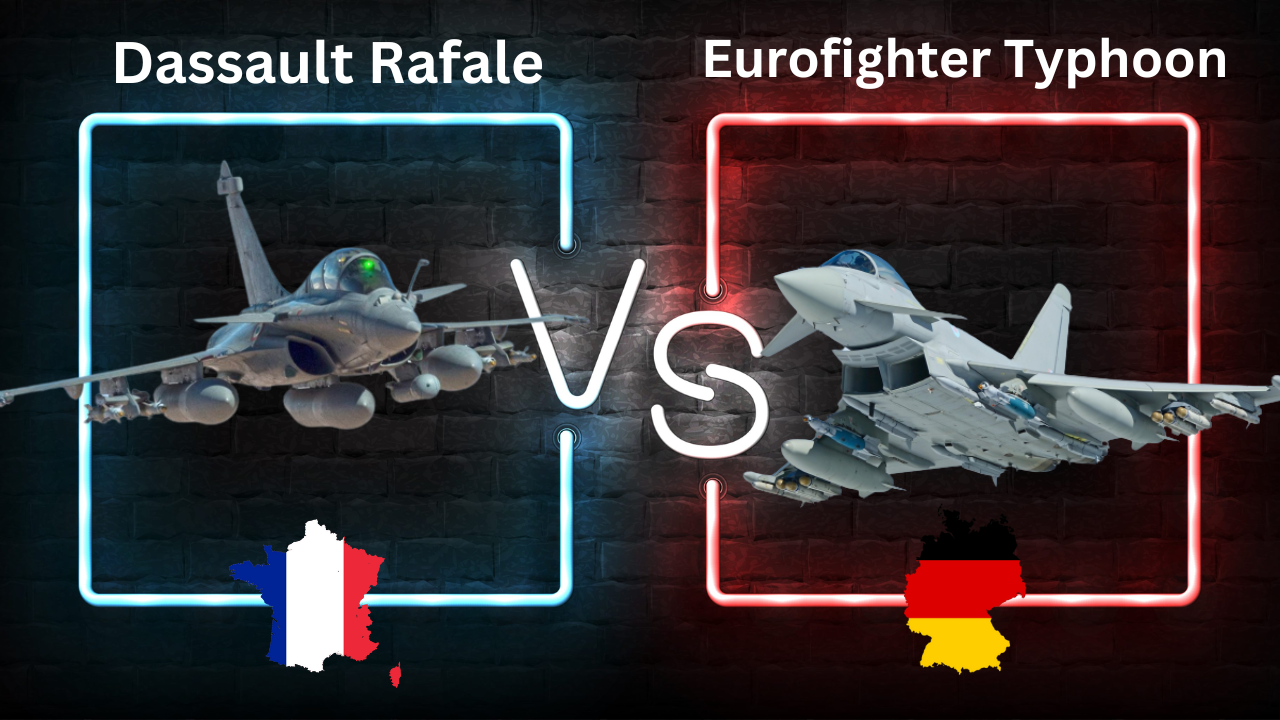
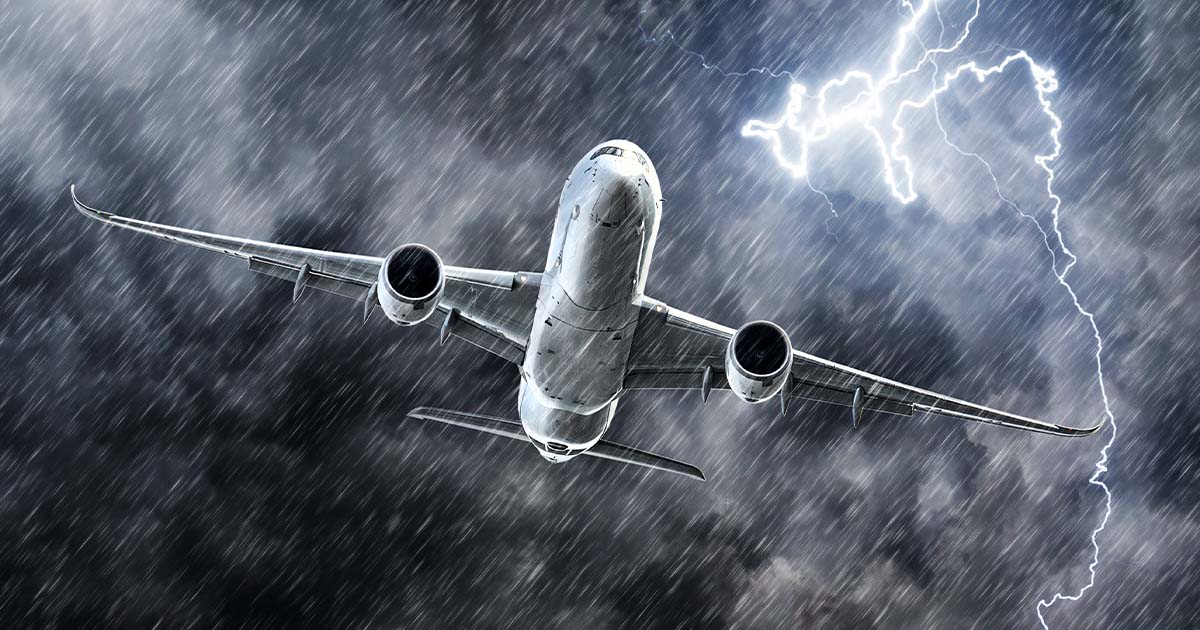

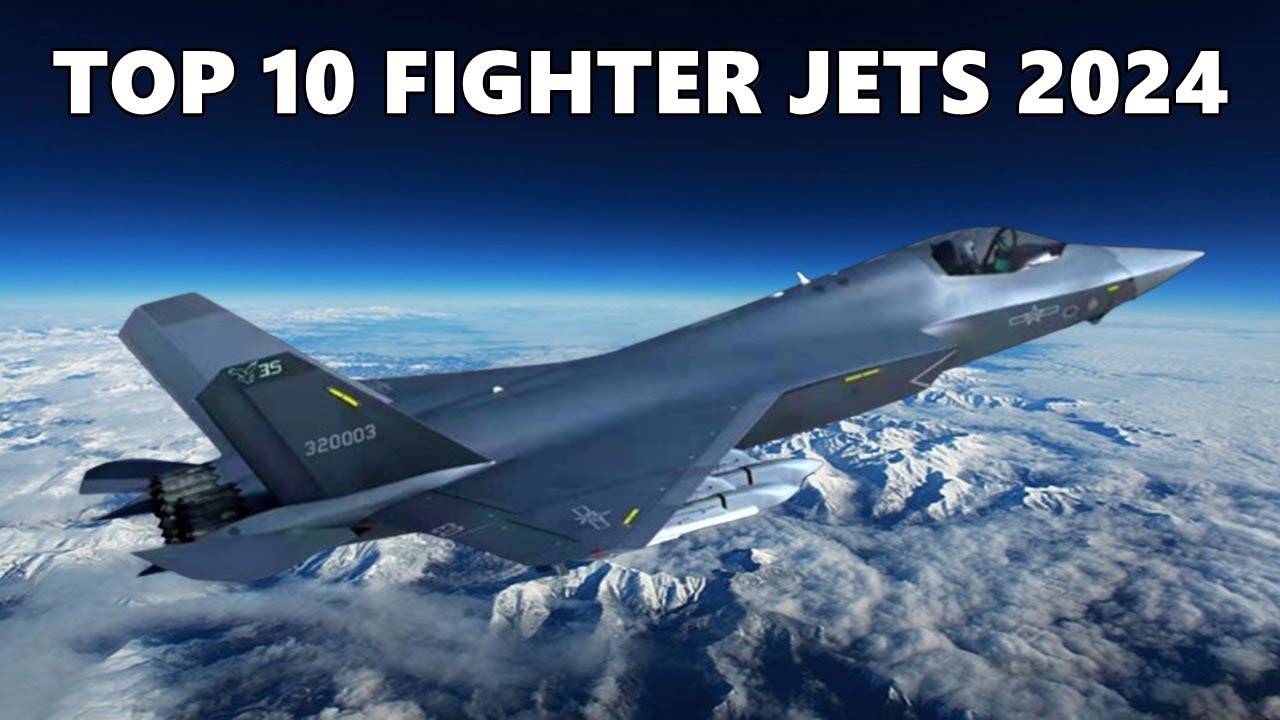
– you reversed the images
– the rafale has stealth characteristics, especially with the F2 and F3 variants